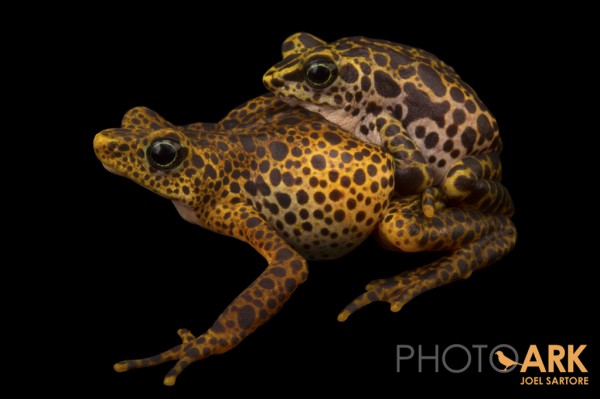Amphibians are dying all over the world due to chytridiomycosis. This disease, caused by Batrachochytrium dendrobatidis (Bd), is responsible for dramatic amphibian declines and extinctions in the Neotropics, including Panamanian tropical forests.
We are a research team that is part of an NSF project investigating microbial diversity on frog skin in Panama. This team includes three principal investigators (Lisa Belden, Reid Harris and Kevin Minbiole), three postdoctoral fellows (Eria Rebollar, Myra Hughey and Tom Umile) and several graduate and undergraduate students from James Madison University, Virginia Tech, Villanova University and the Smithsonian Tropical Research Institute. We are interested in understanding how microbial communities from amphibian skin might contribute to the survival of amphibian species that have persisted in the wild despite the presence of Bd. Since 2012, we have collected samples from multiple sites in lowland tropical forests to describe the factors that shape skin microbial communities in tropical amphibians, including the presence of the pathogen Bd.
We recently published a study on the skin microbiota of five species of tropical amphibians from one of the few sites in Panamá where amphibians have not been infected with Bd, called Serranía del Sapo, in the Darién Province. In the summer of 2012, Myra Hughey, Roberto Ibáñez and Daniel Medina collected skin swab samples from this lowland site of highly susceptible and less-susceptible species, including two highly threatened species: Atelopus certus and Strabomantis bufoniformis. When we analyzed the bacterial species present on the skin of these five amphibian species we found that amphibians had a unique microbiota on the skin that was very distinct from the bacterial communities in the environment. These symbiotic bacteria were not only different from the environment, but were also different among the amphibian species. Interestingly we found that the three less Bd-susceptible species that we studied (Craugastor fitzingeri, Espadarana prosoblepon and Colosthetus panamansis) had a common set of bacteria that was not present on the two highly susceptible species (A. certus and S. bufoniformis).
We think that the bacteria present in the less-susceptible species might be playing a defensive role against pathogens like Bd. If these bacteria indeed have antifungal properties, what are the factors determining the presence of these antifungal bacteria on the skin of less susceptible species? To pursue this idea, we compared the microbial communities of C. fitzingeri in the Darién region with skin communities from regions where the frogs were infected with Bd, in Colón and Panamá provinces (Mamoní, Soberanía and Gamboa). We found that the skin bacterial communities in the infected regions had an increased proportion of bacterial species like Pseudomonas and members of the Actinomycetes. Interestingly, these bacteria are known for their antifungal activities in other amphibians, and therefore it is possible that they might be playing an important role in Bd resistance. Since other factors could be influencing these communities, we are currently analyzing experimental data to determine if Bd infection is driving these changes in the skin microbiota.
How can we use the information we have gathered to protect amphibians that do not have high proportions of Pseudomonas and Actinomycetes on their skins? Can we culture these bacteria and study their antifungal properties? We are currently analyzing cultured microbes from less susceptible species to determine if they have anti-Bd properties in vitro. If these microbes are indeed effective against Bd, can we use them as skin probiotics for the highly susceptible species? Probiotics are a very promising avenue towards conservation of susceptible amphibians since the skin microbiota has already been manipulated in some species to protect them from Bd. However a lot of additional studies still need to be done to implement this approach successfully.
Publications
Belden LK, Hughey MC, Rebollar EA, Umile TP, Loftus SC, Burzynski EA, Minbiole KPC, House LL, Jensen RV, Becker MH, Walke JB, Medina D, Ibáñez R and Harris RN (2015) Panamanian frog species host unique skin bacterial communities. Front. Microbiol. 6:1171. doi: 10.3389/fmicb.2015.01171
,,, , and ISME Journal. doi:10.1038/ismej.2015.234
by Eria Rebollar


